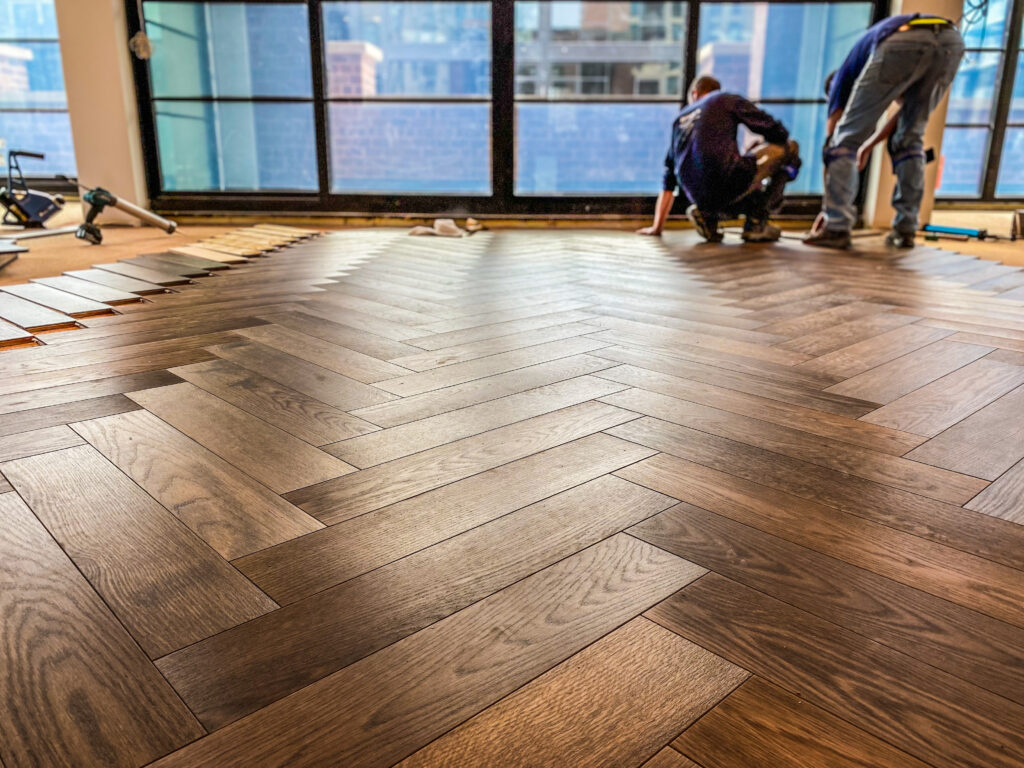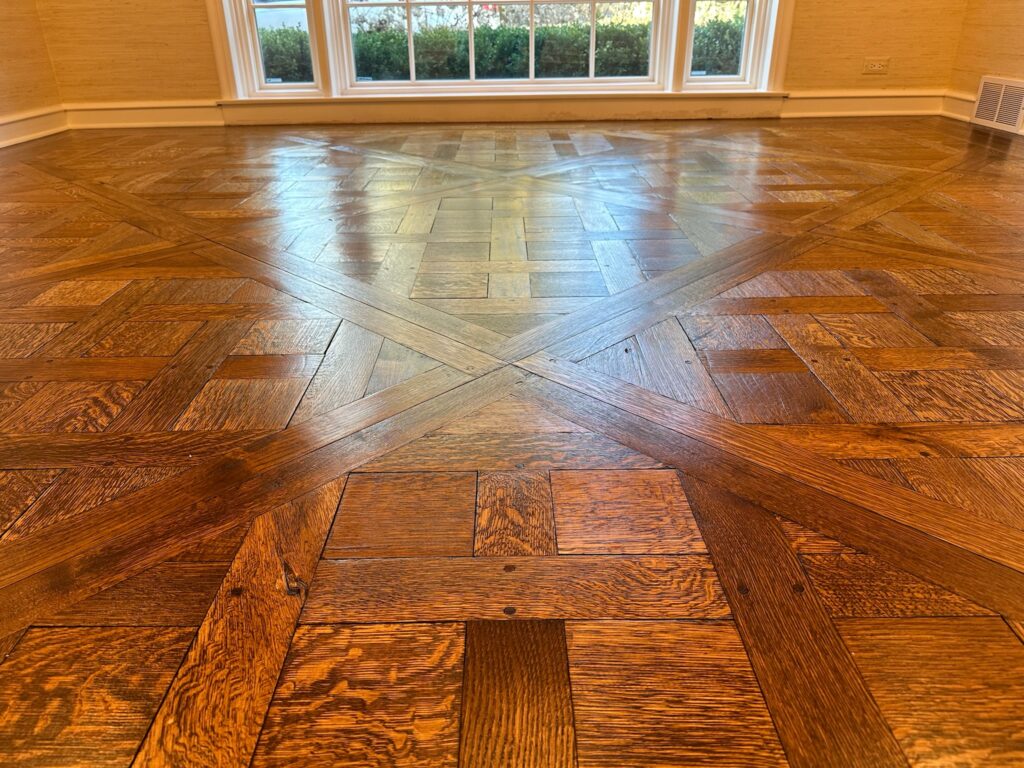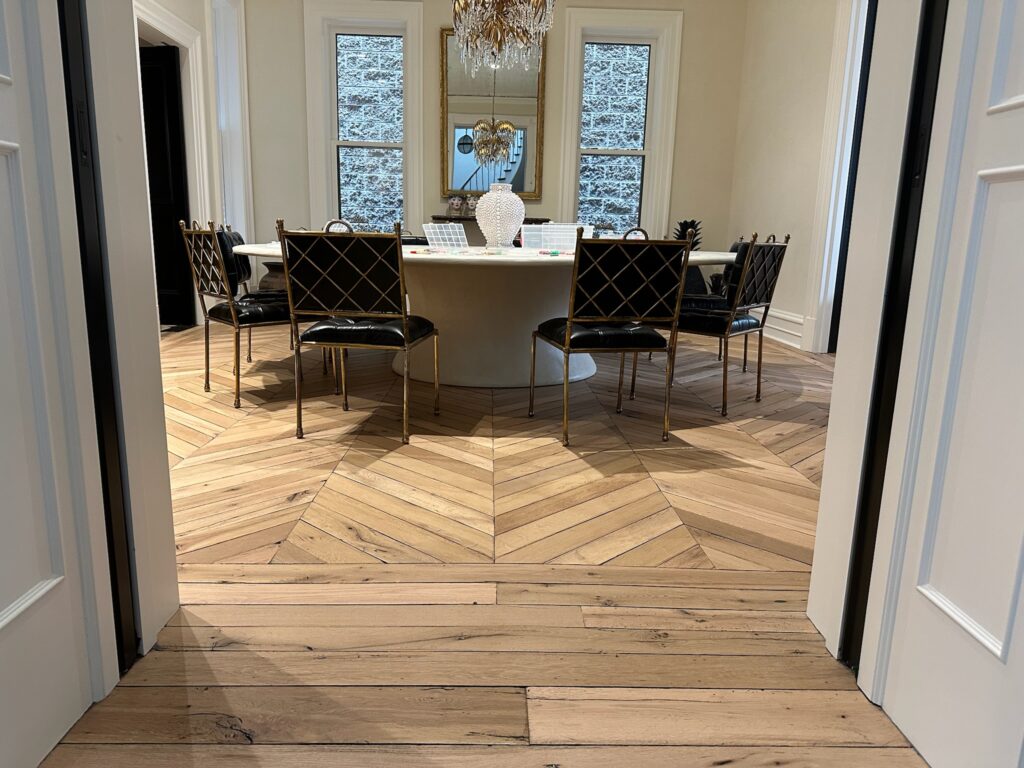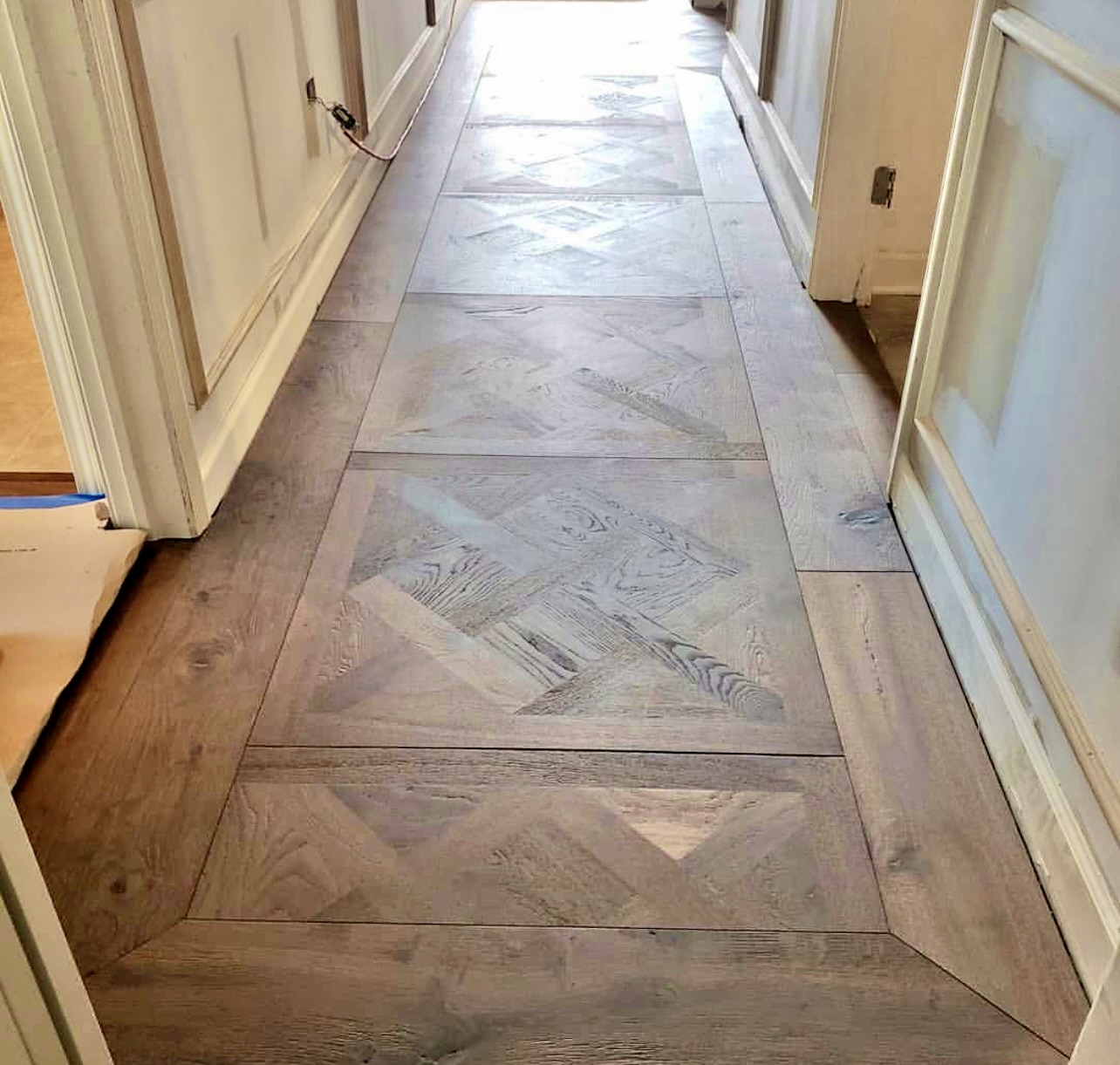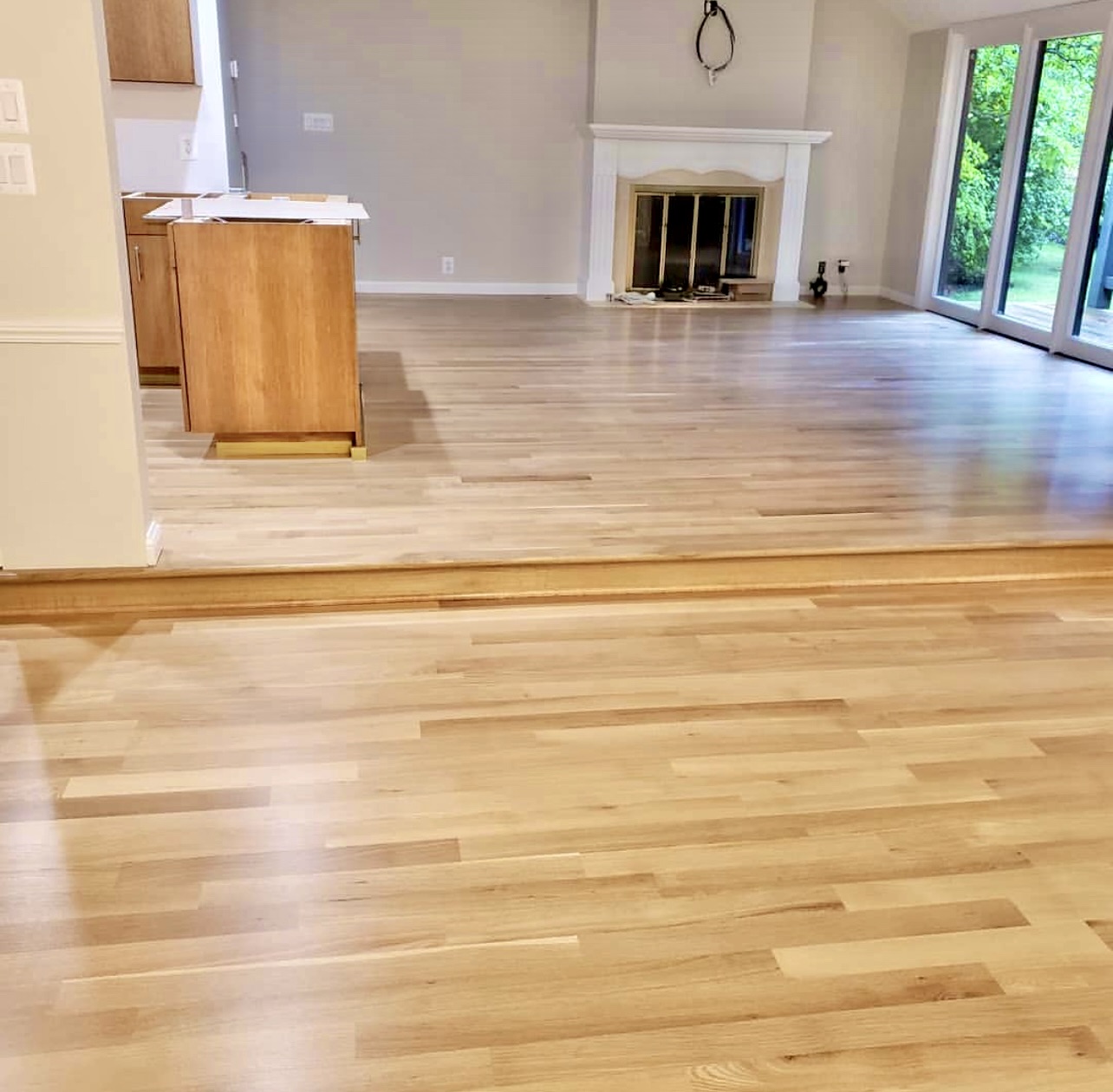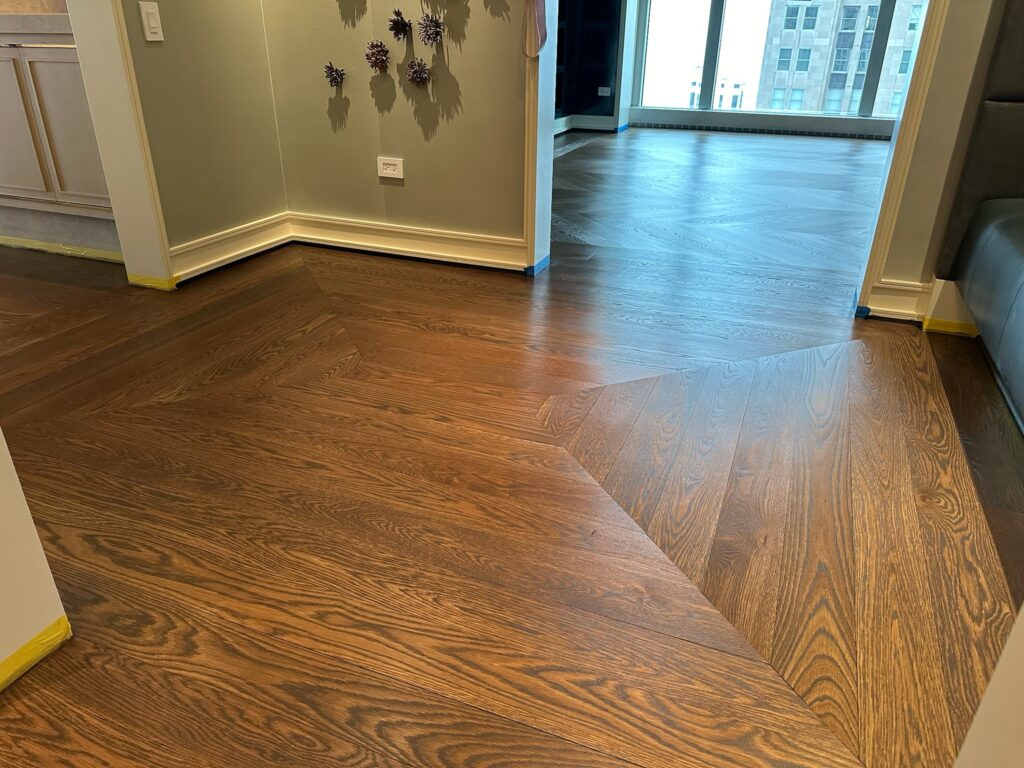Hardwood Floors - Flooring Options
- Home
- Hardwood Floors
Various Hardwood Types and Styles
Reddy’s Hardwood Flooring Options offers a wide selection of genuine hardwood flooring solutions, catering to diverse tastes and requirements. We assist you in selecting the ideal hardwood for your space, considering each wood type’s distinctive properties. Our hardwood flooring options combine durability and aesthetics.
Within the world of hardwood flooring, the variations we offer are defined by specific “types” or “styles,” guiding you through the array of choices to find your ideal match. Each type, whether it be solid, engineered, pre-finished, or unfinished, tells you about the way your flooring is crafted and how it’s intended to look and feel underfoot. Additionally, the design and overall impact of your flooring are further refined by the size and shape of the wood – be it narrow “strips,” wide “planks,” or decorative “parquet” patterns. These distinctions are more than just terms; they are a way to navigate through the multitude of options, ensuring you find the flooring that perfectly aligns with your project’s needs and aesthetics.
Hardwood Types
- Solid Hardwood: This is made from single pieces of wood, typically 3/4″ thick, but it can vary. It’s known for its longevity and can be sanded down and refinished multiple times.
- Engineered Hardwood: Engineered hardwood is constructed from multiple layers of wood, with a thin layer of hardwood on top and several layers of plywood or a similar material beneath. It’s designed to reduce the expansion and contraction that natural wood undergoes with changes in humidity, making it suitable for a wider range of environments, including below-grade installations like basements.
- Pre-finished Hardwood: This hardwood comes already sanded, stained, and finished from the factory. The advantage is a faster and cleaner installation process, as there’s no need for on-site finishing.
- Unfinished Hardwood: Unfinished hardwood flooring is installed in its raw state and then sanded, stained, and finished on-site. This option allows for more customization in terms of finish and color.
Hardwood Styles
Strips: These are long, narrow pieces of wood, typically ranging in width from 1.5 to 2.5 inches. Strip flooring creates a linear effect in a room, often making it appear larger.
Planks: Hardwood planks are wider than strips, usually ranging from 3 to 8 inches wide. Plank flooring offers a more rustic or traditional look.
Parquet Floors: Parquet flooring is made up of wood pieces arranged in a mosaic or geometric pattern. This category includes various sizes and shapes, offering a decorative and often artistic flooring option.
Blocks and Squares: These are smaller pieces of hardwood, used in specific patterns or designs, often found in parquet flooring.
Wide Plank: Wide plank flooring refers to planks that are wider than the typical 3 to 8 inches, sometimes going up to 12 inches or more. It’s often used in rustic or historical reproductions.
Solid Hardwood
Solid hardwood flooring embodies the traditional essence of wooden floors, crafted from a single piece of wood which typically measures around 3/4 inches in thickness, although this can vary. Its hallmark is its durability and the ability to be rejuvenated through sanding and refinishing, activities that can be repeated multiple times over the floor’s lifetime. This capability not only extends the lifespan of the flooring but also allows for aesthetic updates in line with changing tastes or wear repair. The natural variation in wood grain and color inherent to solid hardwood adds a unique character and warmth to any room, making it a solid option for those looking to invest in the timeless appeal and long-term value of their home.
JANKA HARDNESS SCALE
The Janka Hardness Scale is a measure used to determine the resistance of a wood sample to wear and denting. It is a crucial factor in assessing the durability and suitability of wood for flooring and other applications that demand strength and resilience. The test measures the force required to embed a 0.444-inch (11.28 mm) diameter steel ball halfway into a piece of wood. This force is typically expressed in pounds-force (lbf) in the United States.
Engineered Hardwood
Engineered hardwood presents a modern solution to the challenges of natural wood flooring by incorporating a multi-layered construction. The top layer is a veneer of real hardwood, showcasing the beautiful grains and colors of natural wood. Beneath this veneer lie several layers of plywood or high-density fiberboard, strategically layered to counteract wood’s natural tendency to expand and contract with changes in humidity. This structural innovation makes engineered hardwood a versatile choice, capable of being installed in areas where solid wood might not be advisable, such as basements or over concrete slabs. It marries the beauty of hardwood with increased stability and resistance to moisture, thereby expanding the possibilities for wood flooring throughout the home.
Engineered wood flooring is a highly versatile and durable flooring option that consists of multiple layers of wood pressed together. Unlike solid hardwood, which is made from a single piece of wood, engineered wood is designed to provide enhanced stability and resistance to environmental changes. Here’s a closer look at its composition and manufacturing process:
Composition
- Top Layer (Wear Layer): The topmost layer of engineered wood flooring is a thin veneer of real hardwood. This layer provides the appearance and beauty of traditional hardwood floors and can come in various species, just like solid hardwood.
- Core Layers: Beneath the veneer are several layers of plywood, hardwood, or high-density fiberboard (HDF). These layers are arranged in a cross-grain configuration, which significantly enhances the floor’s stability and resistance to moisture and temperature fluctuations.
- Back Layer: The bottom layer of engineered wood flooring is often a layer of hardwood or plywood, adding to the structural stability and ensuring the product lies flat against the subfloor.
MANUFACTURING PROCESS
Preparing the Veneer: The process begins with the selection of hardwood logs, which are then cut into thin slices or veneers. The method of cutting can vary, affecting the grain appearance of the top layer. These veneers are carefully dried and prepared to ensure quality and durability.
Layering: The core layers are prepared from plywood, HDF, or sometimes recycled wood fibers. These core materials are arranged in a way that the grain of each layer runs perpendicular to the adjacent layers, optimizing the floor’s structural integrity.
Pressing: The veneer and core layers are glued together under high pressure and heat. This pressing process ensures that the layers bond securely, forming a single, solid plank.
Finishing: Once pressed and bonded, the engineered wood planks can be finished in a variety of ways. Finishes can range from lacquers and oils to UV treatments, all providing additional protection to the wood. Some engineered floors come pre-finished, offering convenience and a ready-to-install product, while others may be finished on-site according to specific preferences.
UnFinished Hardwood
Unfinished hardwood flooring offers the ultimate in customization. Installed in its natural, raw state, it requires sanding, staining, and finishing on-site. This process allows for a level of personalization that pre-finished floors cannot match, enabling homeowners to select the precise shade and finish that complements their decor. The on-site finishing process creates a seamless surface that can be advantageous in historic home restorations or when matching existing flooring, as it allows for a perfect blend with the surrounding environment. Despite the additional time and effort involved, the bespoke result and the ability to perfectly tailor the floor to specific tastes make unfinished hardwood a preferred choice for many.
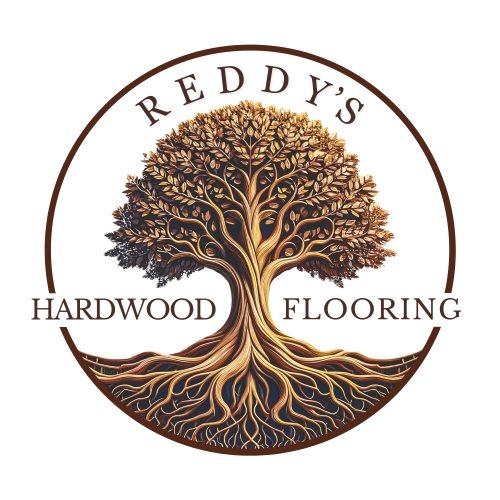
Our Commitment to Quality
At Reddys Hardwood Flooring, we are committed to providing not only the best hardwood flooring options but also the information you need to make the right choice for your home. Each type of wood has its unique properties, including hardness, grain pattern, color, and moisture resistance, which we believe are crucial in choosing the perfect floor.
Pre Finished Hardwood
Pre-finished hardwood flooring streamlines the installation process by arriving already sanded, stained, and sealed directly from the factory. This preparation eliminates the dust, odors, and waiting times associated with on-site finishing, allowing for a quicker and cleaner installation. The factory-applied finishes are extremely durable, often coming with extended warranties that attest to their longevity. Homeowners benefit from seeing the exact color and finish of the product before installation, ensuring that the selected flooring meets their aesthetic preferences and matches their space perfectly from day one.
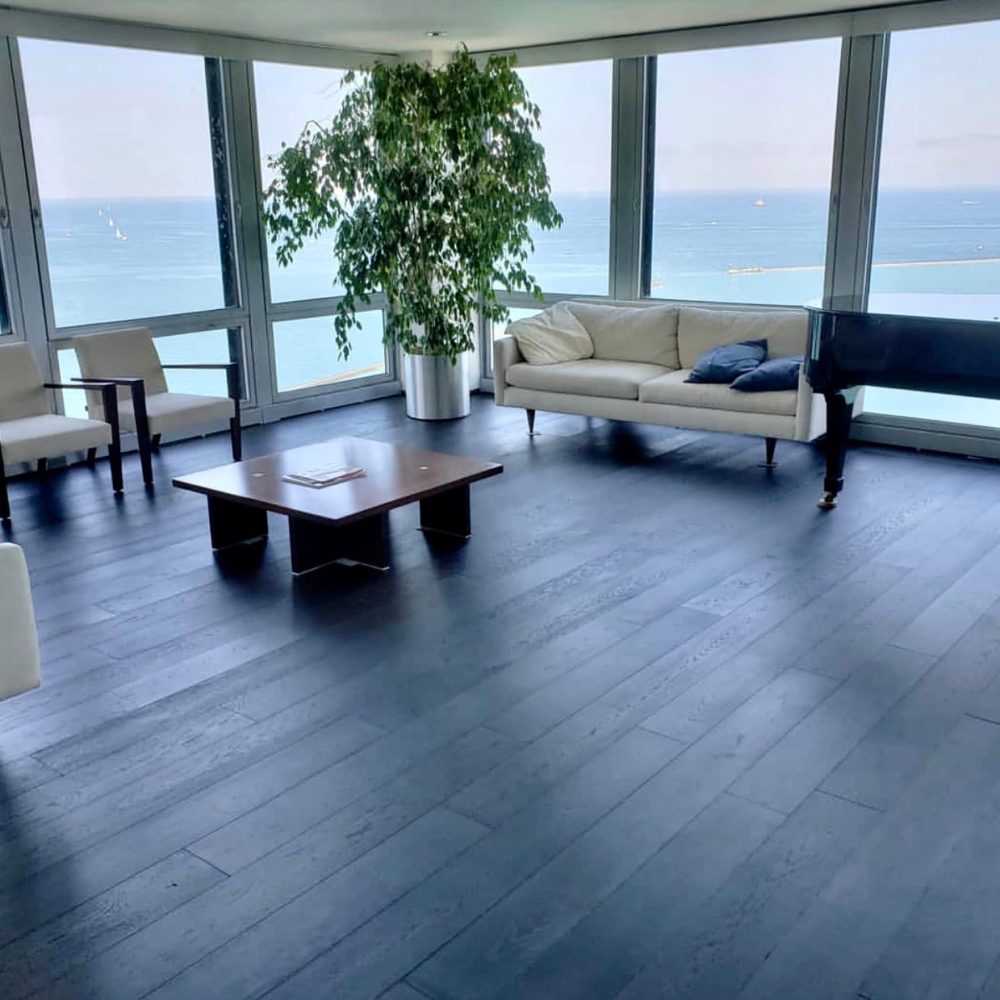
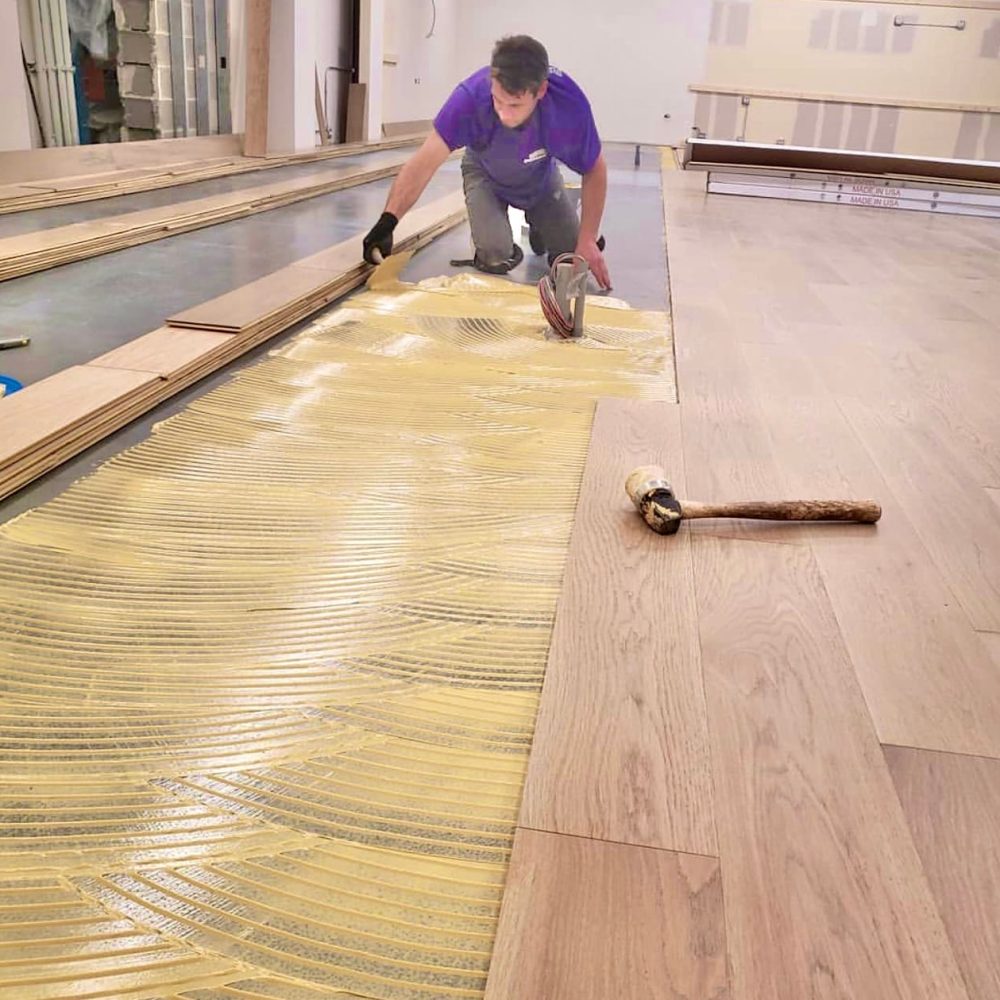
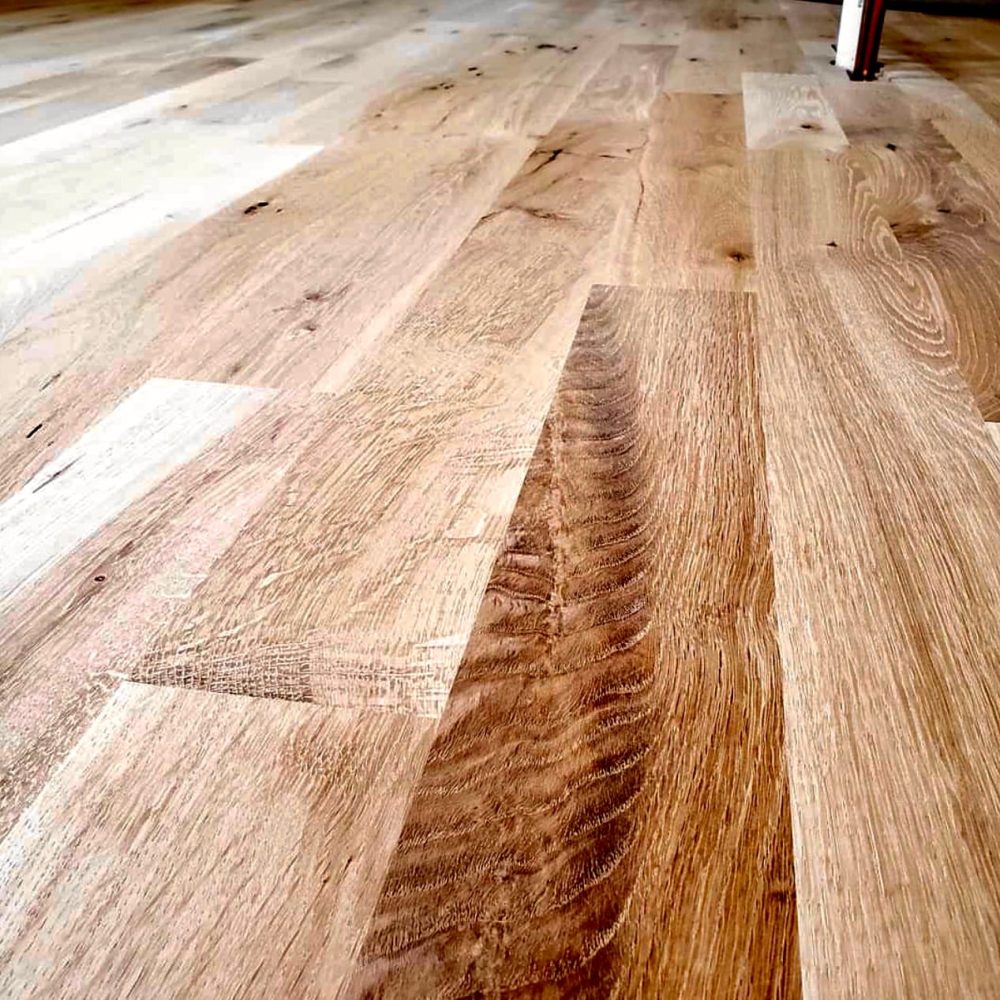
RED AND WHITE OAK Hardwood
Oak has a pronounced grain pattern, with Red Oak showcasing a more distinct pattern than White Oak. White Oak is slightly harder (1360 on the Janka hardness scale) than Red Oak (1290 on the Janka scale), making both suitable for high-traffic areas. In the U.S., oak is widely available across the eastern and central regions, making it a sustainable choice for domestic flooring.
Oak flooring is generally considered to be in the mid-price range of hardwood options. Prices can vary based on the grade of the wood, with higher grades (fewer knots and more uniform color) costing more. On average, the cost for oak flooring can range from $3 to $6 per square foot, not including installation. Both types of oak take stains well, allowing for a wide range of finish colors. White Oak is particularly valued for its ability to be stained in very light or very dark colors due to its neutral color base.
Maple Hardwood
Maple has a fine, uniform grain texture with a natural pale color, making it popular for contemporary and minimalist designs. It’s harder than oak, with a Janka rating of around 1450, which contributes to its durability and resistance to dents and scratches. Maple is primarily sourced from the northeastern U.S. and Canada, where the colder climates are ideal for producing hard, dense wood.
The cost of maple flooring is comparable to oak, ranging from $4 to $7 per square foot. However, the price can increase for select or premium grades that offer a more consistent color and fewer knots. Maple’s tight grain makes it less porous and more challenging to stain than oak. It’s often preferred in its natural or prefinished state to maintain its light color and subtle grain.


Hickory Hardwood
With a Janka hardness rating of about 1820, hickory is highly durable and suitable for areas with heavy foot traffic. Its grain is bold and varies significantly in color, from light to dark brown, within the same piece of wood. Hickory is widely available throughout the eastern U.S. It’s known for its rugged appearance and is one of the hardest domestic hardwoods available.
Hickory is usually more expensive than oak and maple due to its hardness and the difficulty of working with the wood. Prices for hickory flooring can range from $4 to $8 per square foot, depending on the quality and finish. The natural color variation in hickory means it can be left natural or stained to emphasize its rustic charm. However, its hardness can make it more challenging to achieve an even finish with darker stains.
Walnut Hardwood
Walnut is known for its deep, rich, chocolate brown color and fine grain. It offers a softer option on the Janka hardness scale, around 1010, making it less ideal for high-traffic areas but perfect for adding a luxurious feel to living spaces. Walnut, specifically American Black Walnut, is primarily harvested in the eastern United States. It’s less common than oak or maple, which adds to its allure and price.
Due to its rarity and aesthetic appeal, walnut is one of the more expensive hardwood flooring options. Prices can range from $5 to $9 per square foot, making it a premium choice. The cost can be higher for planks with fewer knots and a more uniform color. Walnut’s natural dark color means it’s often chosen for its untreated, natural state. When finished, it tends to be with a clear sealant that emphasizes its depth and color variation.
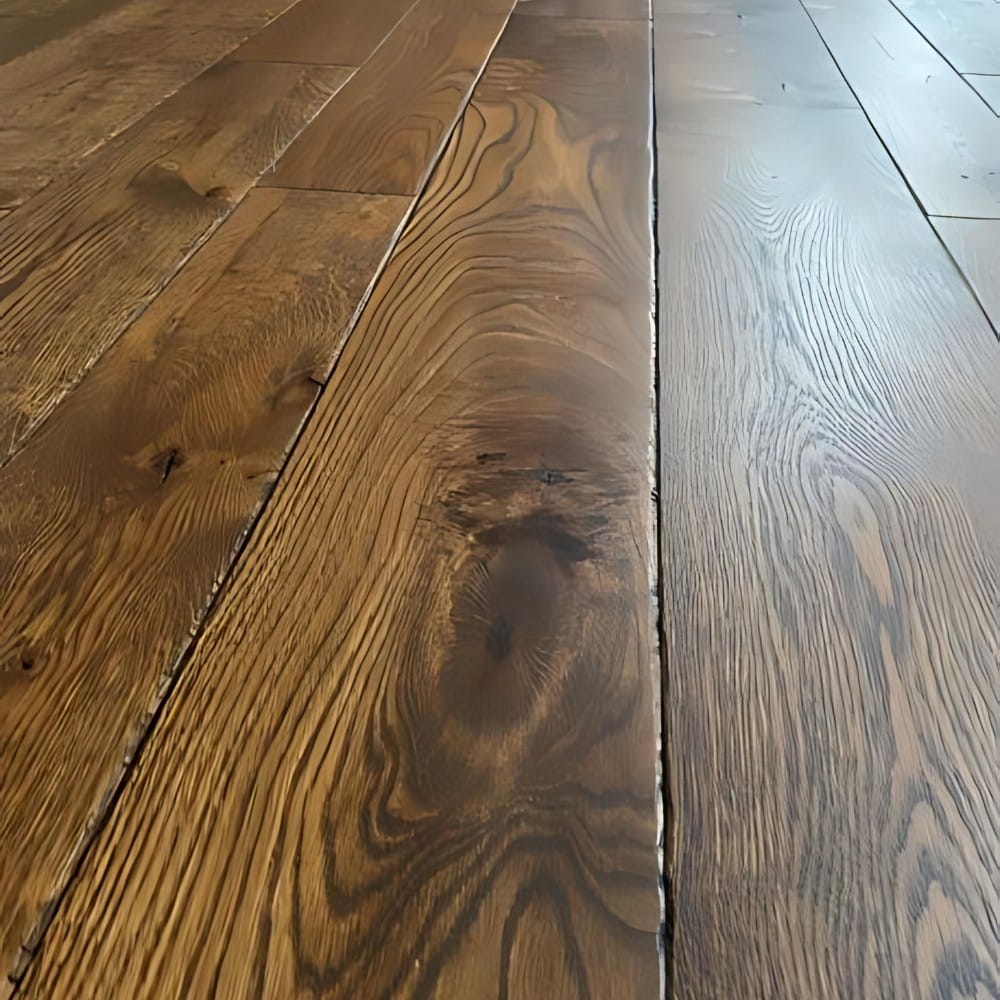
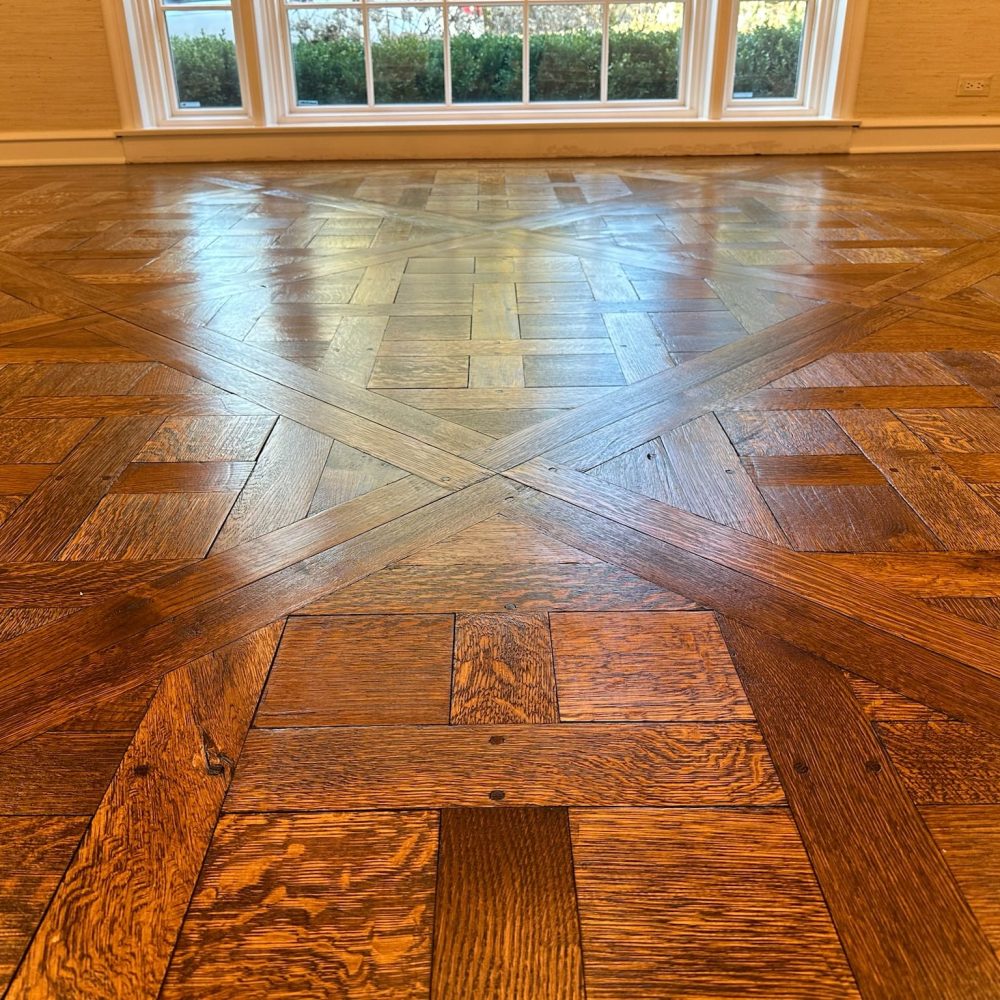
Cherry Hardwood
American Cherry is sourced from the eastern U.S. It’s another less common hardwood, making it a more exclusive flooring option. Cherry wood is appreciated for its smooth, fine grain and warm reddish tones, which deepen over time with exposure to light, a process known as patination. It’s softer than both oak and maple, with a Janka hardness rating around 950, suggesting it’s more susceptible to scratches and dents.
Cherry is in the higher price range due to its beauty and lower hardness, with costs ranging from $5 to $8 per square foot. The price reflects its quality and the elegance it brings to a space. Cherry flooring is often finished to highlight its natural color progression, enhancing its warm tones. Its susceptibility to sunlight means finishes that offer UV protection can be beneficial.
ASH Hardwood
Ash wood is predominantly sourced from the eastern United States. It’s known for its availability and sustainability. Ash has a light natural color with a distinct grain pattern, similar to oak but often lighter and with more contrast. It offers excellent hardness, slightly above oak, with a Janka rating of about 1320, making it durable and suitable for areas with moderate to high foot traffic.
The price of ash flooring is comparable to oak, generally ranging between $4 to $7 per square foot. Its cost-effectiveness combined with durability makes it an attractive option for those looking for a unique but resilient hardwood floor. Ash wood takes both light and dark stains well, providing versatility in finishing options. It’s often chosen for its ability to be customized through staining, offering a wide range of decor styles.
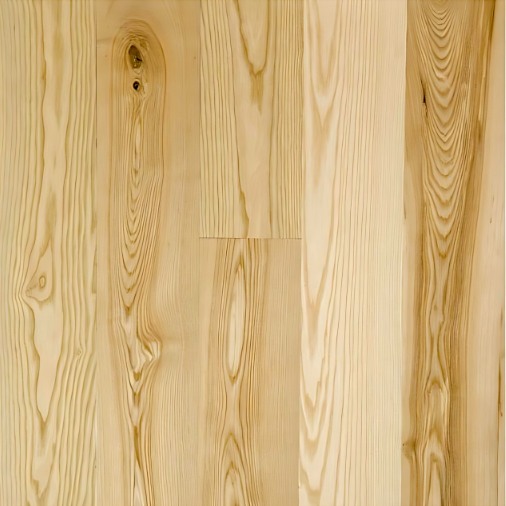
Frequently Asked Questions
Consider the overall style of your home, the size and natural light in your rooms, and your personal preferences. Lighter colors can make a room feel larger and more open, while darker colors add warmth and drama. Consider samples in your space to see how they complement your décor and lighting.
Solid hardwood floors can be sanded and refinished multiple times, usually every 7-10 years depending on wear. Engineered hardwood can be refinished at least once, but the number of times depends on the thickness of the top veneer layer.
Current trends include wide plank floors, rustic and reclaimed wood looks, cool and dark wood tones, and matte or low-luster finishes. These trends focus on creating a spacious, natural, and timeless aesthetic in homes.
The cost of hardwood flooring varies widely based on the type (solid or engineered), species of wood, finish, and installation costs. Prices can range from $3 to $12 per square foot, not including installation. Factors such as the quality of the materials and labor rates in your area will also influence the final price.
In rooms with high moisture, engineered hardwood is often recommended over solid hardwood because of its enhanced stability and resistance to warping. Solid hardwood may not be suitable for high-moisture areas like bathrooms or basements due to its tendency to expand and contract with changes in humidity.
Solid hardwood is made from single pieces of wood, offering a classic and durable option that can be sanded and refinished multiple times. Engineered hardwood consists of a real hardwood veneer on top of multiple layers of plywood or fiberboard, providing enhanced stability and resistance to moisture. The choice between solid and engineered hardwood will depend on your home's specific needs, including moisture levels and the desired installation areas.
Keep in mind, this can vary from floor to floor. Maintaining hardwood flooring involves regular sweeping or vacuuming to remove dust and debris. For cleaning, use a damp mop with a hardwood floor cleaner. Avoid excessive water and harsh cleaners to prevent damage. Placing mats at entrances and using felt pads under furniture can help protect your floors.
With proper care, solid hardwood flooring can last for decades, even a century. Engineered hardwood also offers a long lifespan, typically ranging from 20 to 40 years, depending on the quality of the construction and how well it is maintained.
